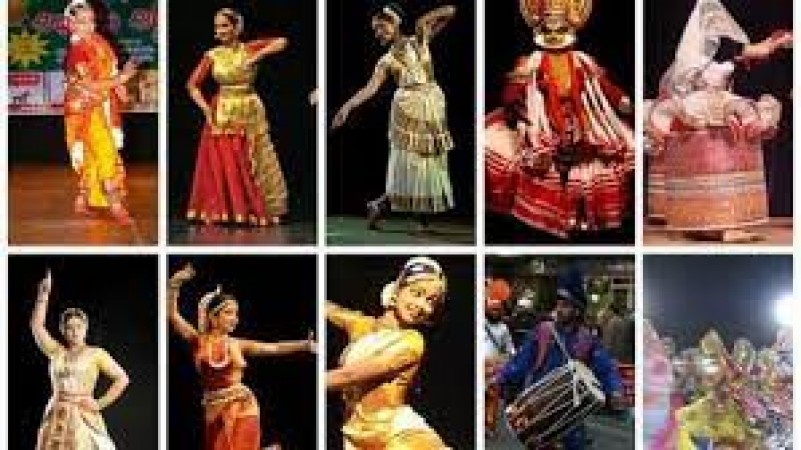
India, with its diverse cultural tapestry, is a land of myriad art forms and traditions. One of the most captivating aspects of Indian culture is its rich legacy of folk dances. These traditional dance forms have been passed down from generation to generation, preserving the essence of various communities and their unique customs. In this article, we will explore the enchanting world of Indian folk dances, their significance, and the vibrant tales they narrate.
The Rich Diversity of Indian Culture
India's cultural landscape is a kaleidoscope of colors, languages, and traditions. Each region of the country boasts its distinct customs and rituals, contributing to the vastness of Indian heritage. The art forms, including dance, reflect the beauty of this diversity, with folk dances playing a crucial role in expressing the soul of each community.
What are Folk Dances?
Folk dances are traditional dances that are deeply rooted in the culture and history of a specific region or community. They are usually performed during religious festivals, harvest celebrations, weddings, and other significant occasions. Unlike classical dances, folk dances are less rigid in their structure and allow for improvisation, making them dynamic and engaging.
The Significance of Indian Folk Dances
Indian folk dances are not merely performances; they hold great significance in the lives of the people. They serve as a means of storytelling, passing down legends and folklore from one generation to another. These dances also strengthen the social fabric, fostering a sense of unity and belonging among the community members.
The Regional Varieties of Indian Folk Dances
5.1. Bhangra - The Vibrant Dance of Punjab
Originating from the fertile land of Punjab, Bhangra is a high-energy dance that reflects the joy and enthusiasm of the farming community. Accompanied by the rhythmic beats of the dhol, the dancers perform vibrant moves, displaying their exuberance.
5.2. Garba - The Graceful Dance of Gujarat
Garba is a traditional dance form from Gujarat that is performed during the Navratri festival. Dancers gracefully move in circles, symbolizing the cyclical nature of life and celebrating the victory of good over evil.
5.3. Bihu - The Colorful Dance of Assam
Bihu is a set of three folk dances from Assam, representing different agricultural seasons. The energetic and lively moves, accompanied by traditional musical instruments, make Bihu a delightful spectacle.
5.4. Ghoomar - The Elegant Dance of Rajasthan
Ghoomar, originating from the royal state of Rajasthan, is a graceful dance performed by women. The dancers twirl gracefully, adorned in colorful traditional attire, expressing feminine charm and elegance.
5.5. Lavani - The Enchanting Dance of Maharashtra
Lavani, from Maharashtra, is a captivating dance form known for its rhythmic movements and bold expressions. It often depicts themes of love, social issues, and folklore.
The Unique Characteristics of Indian Folk Dances
Indian folk dances are characterized by several unique features that make them stand out.
6.1. Costumes and Ornaments
The vibrant costumes and elaborate ornaments worn by the dancers are an integral part of folk dances. These outfits not only add splendor to the performances but also represent the cultural identity of the community.
6.2. Music and Instruments
Traditional musical instruments such as the dhol, dholak, tabla, harmonium, and shehnai are commonly used to create the rhythmic beats that accompany the dances. The music adds life and energy to the performances.
6.3. Themes and Stories
Each folk dance narrates a story, often inspired by mythology, nature, or historical events. These themes infuse the performances with depth and meaning, captivating the audience with their tales.
The Role of Folk Dances in Indian Festivals
Indian festivals are incomplete without the colorful performances of folk dances. These dances play a vital role in celebrating the cultural heritage of the region and fostering a sense of unity among the people.
Preservation and Promotion of Indian Folk Dances
In recent times, there has been a growing concern about preserving and promoting the traditional art forms of India. Several organizations and initiatives are working towards safeguarding Indian folk dances from the threat of extinction.
Folk Dances and Modern Influences
Despite their deep-rooted traditions, folk dances have not remained untouched by modern influences. Some choreographers and artists have been exploring innovative ways to blend traditional elements with contemporary dance forms.
The Global Impact of Indian Folk Dances
Indian folk dances have transcended borders and are celebrated on the international stage. Their vibrant colors, rhythmic patterns, and emotional depth have captivated audiences worldwide.
The Fascinating World of Indian Folk Dances
Immersing oneself in the world of Indian folk dances is a journey through history, culture, and emotions. The beauty of these art forms lies in their ability to convey profound messages through graceful movements.
Benefits of Learning and Practicing Indian Folk Dances
Apart from preserving cultural heritage, learning and practicing Indian folk dances have numerous benefits. They promote physical fitness, enhance coordination, and boost creativity.
Appreciating and Respecting Cultural Heritage
As we embrace modernity, it is essential to appreciate and respect the cultural heritage that defines us. Indian folk dances serve as a reminder of our roots and the wealth of tradition we carry. Indian folk dances are a mesmerizing reflection of the country's cultural diversity and rich heritage. These dances embody the spirit and essence of various communities, narrating stories that have withstood the test of time. By preserving and cherishing these art forms, we ensure that our cultural legacy continues to thrive for generations to come.
Dubai's prominent influencer and content creator, Ahmad Hussain, set for Bollywood debut
From Bollywood to Hollywood: Priyanka Chopra's Journey of Versatility and Global Stardom
Devotion in Harmony: Exploring Bhajans, Qawwalis, and Devotional Music in India